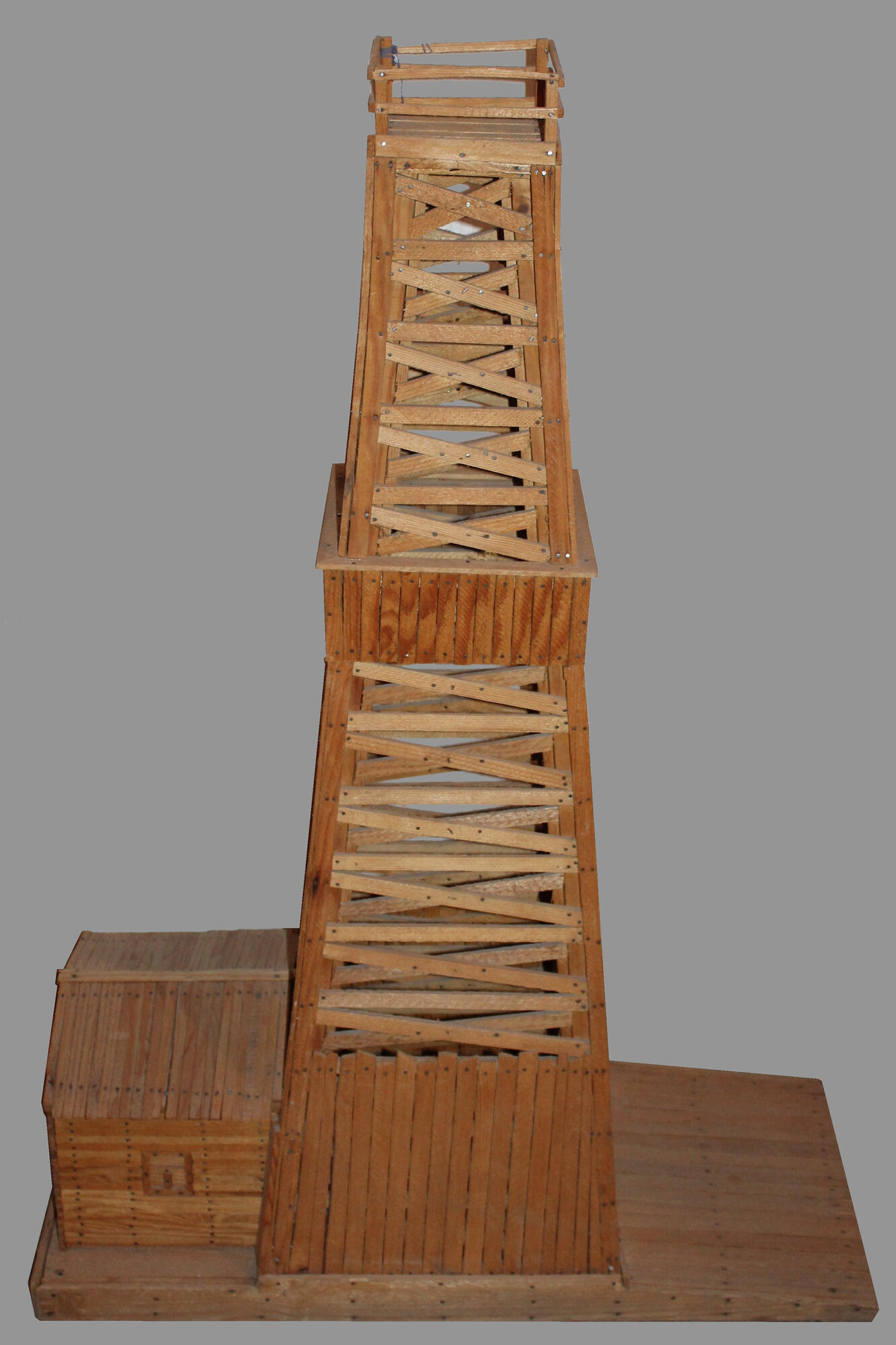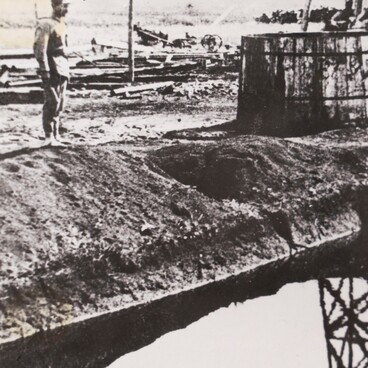A derrick is a structure installed above a bore well for lifting and lowering all kinds of drilling equipment. A derrick is part of a drilling rig. A drilling rig is a complex of drilling equipment and structures that is designed for boring wells. The composition and design of drilling rigs are determined by a large number of factors, such as the well’s purpose, or the conditions and method of drilling.
This model represents a 1930s derrick. Such derricks were built in the city of IshimbAy (which was then the village of IshimbAevo) by workers of the SterlitamAk drilling company. They were made of wood, had a height of 40 meters, and were referred to as “lamp posts” among workers. In December 1930, the SterlitamAk-based newspaper “For the Five-Year Plan” wrote a report about the workers who built IshimbAy’s first drilling rigs: ‘In a desperate bid to finish their work on time, the workers heroically climbed to a great height; however, when driven into the frozen boards, their nails would only snap them in half, and even the workers themselves were at times half-frozen by the time they got lowered back down.’
A derrick can be either a tower, like the ones most commonly built for offshore and deep drilling operations, or a mast. Masts, in turn, are divided into U-frame and A-frame derricks. The latter consist of two supports that are held in an upright position by bracing struts (diagonal structure elements) or a special portal structure and guy cables. They are more difficult and expensive to manufacture, as well as less stable, but easier to transport and reassemble. The height of a derrick depends on the depth of the future bore well and usually ranges from 9 to 58 meters. The most important technical specifications of a derrick are its height and lifting capacity.



